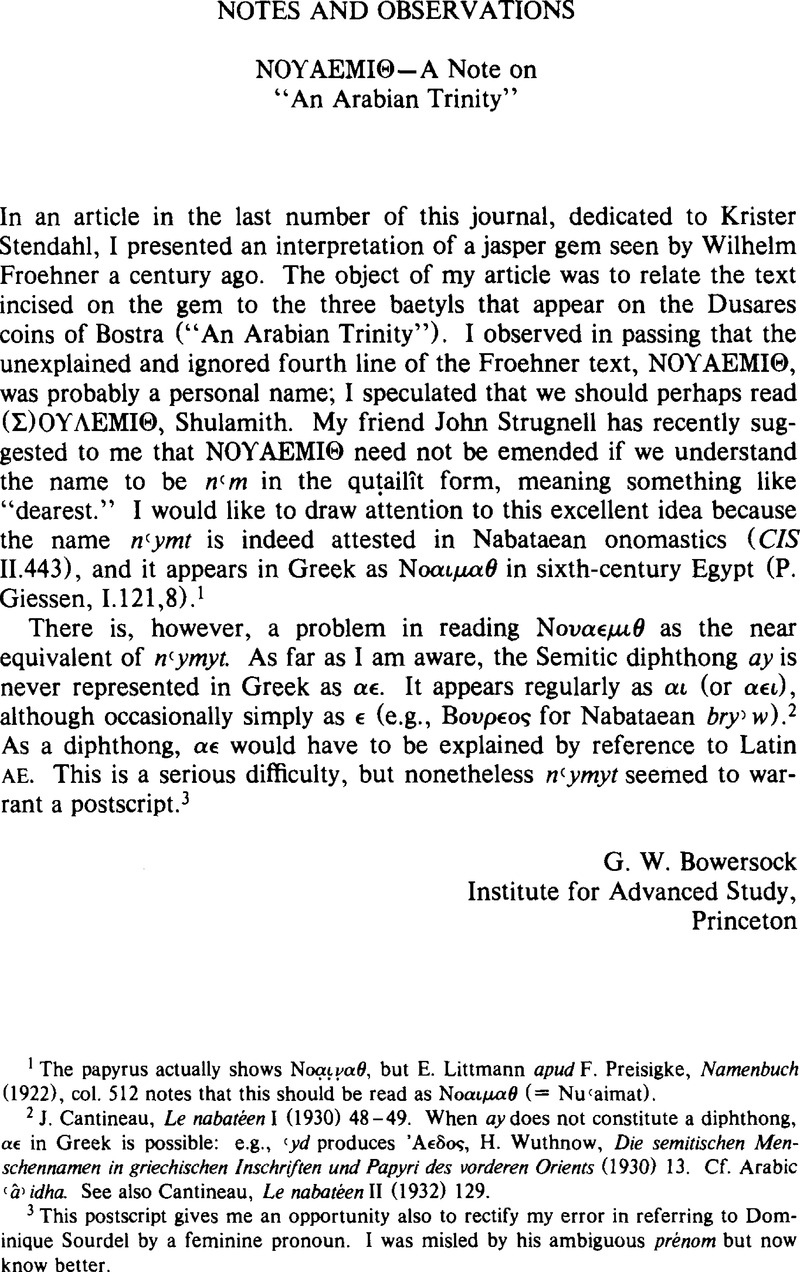No CrossRef data available.
Article contents
NoγaemiΘ—A Note on “An Arabian Trinity”
Published online by Cambridge University Press: 10 June 2011
Abstract

- Type
- Notes and Observations
- Information
- Copyright
- Copyright © President and Fellows of Harvard College 1986
References
1 The papyrus actually shows ![]() , but Littmann, E.apud F. Preisigke, Namenbuch (1922), col. 512 notes that this should be read as Νοαιμαθ (= Nuʿaimat).Google Scholar
, but Littmann, E.apud F. Preisigke, Namenbuch (1922), col. 512 notes that this should be read as Νοαιμαθ (= Nuʿaimat).Google Scholar
2 Cantineau, J., Le nabatéen I (1930) 48–49Google Scholar. When ay does not constitute a diphthong, αε in Greek is possible: e.g., ʿyd produces ’Ἀεδος,, Wuthnow, H., Die semitischen Menschennamen in griechischen Inschriften und Papyri des vorderen Orients (1930)Google Scholar 13. Cf. Arabic ʿâʿ idha. See also Cantineau, , Le nabatéen II (1932) 129.Google Scholar
3 This postscript gives me an opportunity also to rectify my error in referring to Dominique Sourdel by a feminine pronoun. I was misled by his ambiguous prénom but now know better.


